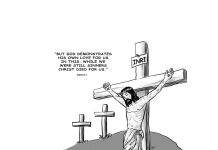BY ATTY. REX S. SALVILLA
WHAT is El Niño and La Niña?
EL Niño is a climate phenomenon characterized by long periods of hot dry season. It starts in Peru (South America) with a rapid warming of the sea surface.
This warm water is slowly brought by the north equatorial current across the Pacific Ocean and to the Philippines.
It brings flood, drought and famine. It is called El Niño (Child Jesus) because it usually starts around Christmas time.
In Western Visayas, the El Niño-prone areas are Capiz, Iloilo, Guimaras, Negros, Occidental, and Aklan – all with “high vulnerability.”
But Antique has “low vulnerability.” Usually, it starts on late November up to early June.
On the other hand, La Niña is the opposite of El Niño.
La Niña is described by the Philippine Atmospheric, Geophysical and Astronomical Services Administration (Pagasa) as “a cooler than normal sea surface temperature (SST) in Eastern Pacific covering the coasts of Peru and warmer than SST over the Western Pacific including the Philippines.”
This persistent warmer-than-normal SST around the Philippines may bring more rains in many parts of the country. The difference between El Niño and La Niña is this: El Niño creates a dry climate (low rainfall) during rainy season. On the other hand, La Niña creates a wet climate (heavy rainfall) during dry season.
Thus, El Niño may cause drought while La Nina may cause heavy rains which may result in disastrous floods and landslides.
Hence, both are weather aberrations in the country./PN







